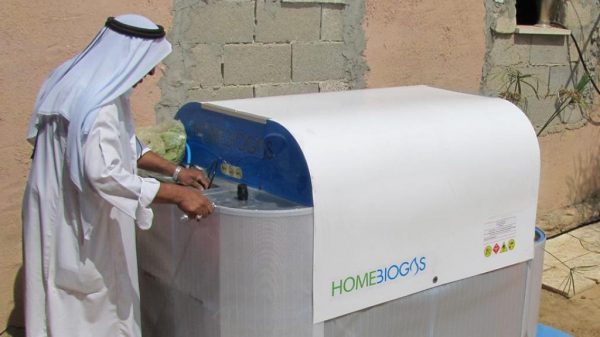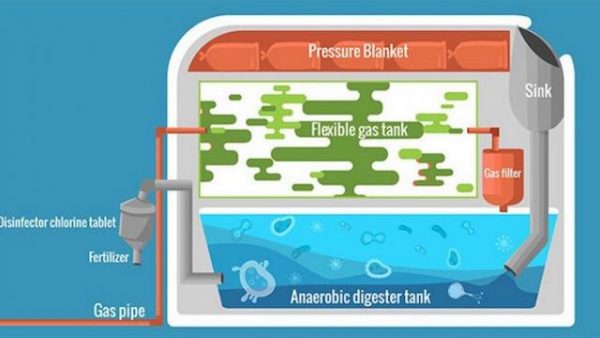
Each year, 1.3 billion tonnes of food go to waste around the world, representing a full third of the food intended for human consumption. In Europe and in the United States, consumers are the primary culprits. According to a European Commission study from 2010, individuals and families are responsible for 42 percent of food waste, ahead of agribusiness (39 percent).
But with the Homebiogas system, there’s no more throwing out your leftovers. From one kilogram of trash (leftover food or animal faeces), the digester produces 200 litres of gas, which allows you to cook for one hour at high heat, the company says.

Ten years ago, I went to India for a study on water pollution. I was housed in a village way up on a mountain, in a completely isolated area. But in their home, the family with whom I was staying had…cooking gas. They showed me their makeshift digester: cow manure was placed in a hole in the ground and then pumped into the kitchen as cooking gas. It also produced a liquid that they used as fertilizer.
“It helps fight deforestation”
It’s a superb solution for developing countries. The gas they cooked with was clean and less harmful than the smoke produced when wood is burned for cooking. Indeed, numerous studies have shown that domestic use of wood fires causes respiratory illness, especially among women and children. These people’s method also allowed them to help fight deforestation.
So, with some friends, I started a team whose goal was to come up with a system inspired by what I’d seen in India. I wanted to produce a machine that would be easy to install at your home, that wouldn’t be too invasive or ugly. We worked on Homebiogas for several years before putting it on the market on the Internet, starting last year.
“Six tonnes of CO2 emissions are avoided each year”
The system is usable in rural areas and villages, but also in suburban and urban areas, though you do have to have a garden. The advantage is that it allows you to bring clean energy to areas where access to electricity is limited. But it’s also a machine that can be used in developed countries. That said, it works best in countries where it’s hot: higher temperatures accelerate the [digestion] process.”
We’ve already sold 500 Homebiogas systems on the Internet. The buyers are often private citizens, and they come from 25 different countries, notably Israel, Mexico, Australia and South Africa. We’ve also installed digesters in a Palestinian village in the West Bank. [Editor’s note: The project, launched in 2015 at Al-Awja, allowed for the installation of about 40 biogas generators in Bedouin villages. Organized by the Peres Centre for Peace, it received €500,000 in financing from the European Union.]
The price is $995, or €880. According to our calculations, the product pays for itself in just three years, thanks to the savings it produces on gas and fertilizer. We estimate that in one year, Homebiogas also allows you to avoid six tonnes of CO2 emissions.
Leave a Reply
You must be logged in to post a comment.